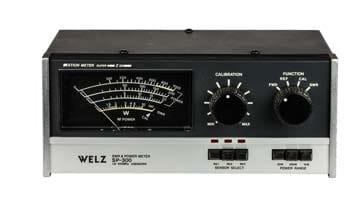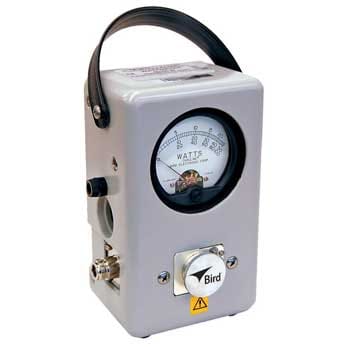How to Measure VSWR: approaches & test instruments
VSWR, voltage standing wave ratio is a key parameter to measure when using a radio transmitter, and there are several methods and test instruments that can be used.
Home » Antennas & Propagation » this page
VSWR & Transmission Line Theory Tutorial Includes:
What is VSWR?
Reflection Coefficient
VSWR formulas & calculations
How to measure VSWR
How to use a VSWR meter
Simple SWR bridge circuit
What is return loss
VSWR / Return Loss Table
As VSWR is a key parameter that is particularly important for applications where transmitters are used.
There are several test instruments and test approaches that can be used to measure VSWR, each with its advantages and disadvantages.
A variety of approaches can be used to measure VSWR using test instruments ranging from VSWR meters to directional power meters, and antenna analyzers to vector network analyzers.
Types of VSWR measurement
In some ways it is possible to consider that there are two forms of VSWR measurement dependent upon how they are implemented, the test instrument, and the way in which the measurements are made.
- VSWR measurements using power from transmitter: These measurements are made using the power supplied by a transmitter. Typically they are made with a transmitter operating with a reasonable level of power. The VSWR meters used are often left in line during normal operation as a monitor of current readings. In this way they can provide a very useful indication of a fault occurring, or a rise in VSWR due to another issue during operation.
- Test instrument stimulus VSWR measurements: Other tests are achieved using test instruments that supply a (typically) low power stimulus to the load or system. These VSWR measurements and tests are normally done during set-up or development and then only as required. They cannot be left in circuit during normal operation as they cannot operate with the transmitter in situ and providing its power..
Live inline VSWR measurements
How to measure VSWR using a VSWR meter It is possible to obtain VSWR meters or SWR meters from a variety of sources. They are often available from amateur radio and CB suppliers as well as a number of other sources.

Typical VSWR meter used with a transmitter These VSWR meters are ideal for measuring and monitoring the VSWR at the transmitter to ensure that it does not experience a high level of VSWR.
Although these VSWR meters are not always particularly accurate, they can provide an excellent way of measuring VSWR easily and in a cost effective manner.
There is a wide variety of VSWR meters available. They range from the very cheap small units aimed at CB usage through higher quality models often aimed at amateur radio operators and beyond.
The basis of a VSWR meter is a directional coupler. This samples a small amount of power in one direction and then uses a diode to rectify this after which it is applied to a meter. Two couplers may be used: one for each direction, or one may be used and this can be switched.
As directional couplers are frequency sensitive, make sure that the VSWR meter is able to operate on the frequencies that are needed.
Read more about . . . . how to use an SWR meter.
Using a directional power meter for VSWR measurements A form of power meter called a directional power meter can also be used. Essentially this uses the same basic concept that is used by a VSWR meter, sampling the forward and reflected power using a directional coupler. However it is aimed at providing accurate RF measurements and will be calibrated in watts, and it will be switchable between the forward and reverse directions.

Bird 43 Thuline ® Wattmeter that provides forward and reverse power Directional power meters, again use a directional coupler. Often the coupler will be calibrated for a band of frequencies. The famous Bird 43 Thruline has different plug in elements that are used for different frequencies. In this way it can cover a wide range of frequencies whilst retaining its accuracy. Other inline meters will use other techniques to ensure the accuracy over the frequencies in use.
Set & development VSWR measurement
The second type of VSWR measurement is performed by test instruments that supply a small stimulus to the antenna or load. They detect the response and from this they are able to provide information about the antenna performance, including its VSWR.
- Vector Network Analyzer: The vector network analyzer is able to provide one of the most comprehensive forms of test of a network, looking at the transmission through the network, input impedance, and very many other aspects. As such it is able to make very comprehensive VSWR measurements.
Vector Network Analyzers are normally quite complicated test instruments and those that operate up to many GHz in frequency are also relatively expensive, but they are able to provide measurements the give a very good insight into the properties of an antenna, etc. - Antenna analyzer: There are many different types of antenna analyser on the market. Some of the more expensive ones have inbuilt VSWR meters that are able to give a through-line form of VSWR measurement as well as analysing the antenna using other techniques.
 Written by Ian Poole .
Written by Ian Poole .
Experienced electronics engineer and author.
More Antenna & Propagation Topics:
EM waves
Radio propagation
Ionospheric propagation
Ground wave
Meteor scatter
Tropospheric propagation
Antenna basics
Cubical quad
Dipole
Discone
Ferrite rod
Log periodic antenna
Parabolic reflector antenna
Phased array antennas
Vertical antennas
Yagi
Antenna grounding
Installation guidelines
TV antennas
Coax cable
Waveguide
VSWR
Antenna baluns
MIMO
Return to Antennas & Propagation menu . . .



